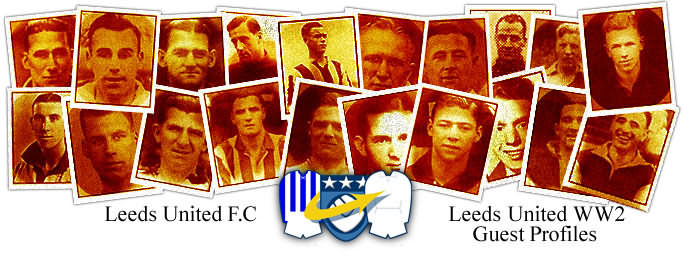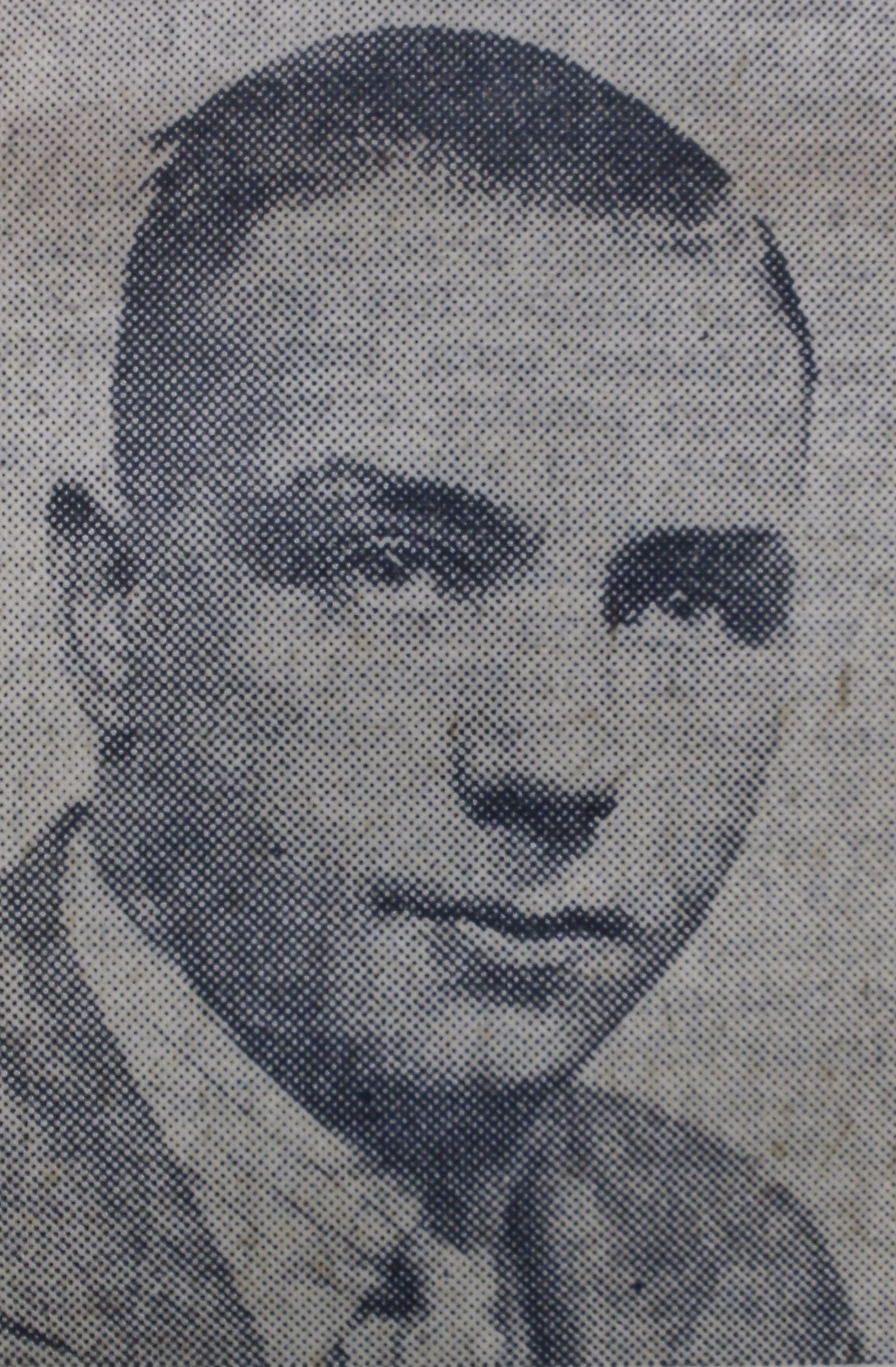
 (Courtesy Neil Roche)
(Courtesy Neil Roche)
Thompson: Leslie
WW2 Guest: 1939-1944
(Leeds United War-time Guest Player Details)
Wing Half
Born: Little Houghton, near Barnsley, Yorkshire: 14-02-1922
Debut: v Bradford City (h): 28-10-1939
Height & Weight: Unknown
Leslie Thompson seemed to have the footballing world at his feet, having won three English
Schoolboy International caps, as captain of the team, in 1936. He had then joined Leeds United
from Middlecliffe Rovers, the club that had produced Wilf Copping and Ken Gadsby, in 1937. He
had not made a senior appearance for Leeds by the start of the Second World War but after
starting in the club's office at just fifteen, he had already joined the Leeds Ground-staff and
played as an amateur in the Yorkshire League by November 1937 and signed professional forms as
a seventeen year-old in early 1939, making his Central League debut in February 1939. He had
been given games, as a fifteen year-old, with Outwood Stormcocks, a famous Leeds feeder club,
and gained further experience with regular appearances in the Club's third team in the Yorkshire
League and progressed through the Yorksire Mid-Week League side, which was predominantly made up
of reserve team players. He was still not eighteen when he was considered ready for the first
team just after the start of World War Two. He made his debut on 28th October 1939 at Left Half
in the first Wartime game in a 3-0 win over Bradford City at Elland Road. He went on to play all
but three games in the 1939-40 Regional League North East Division, with twelve games at Left
Half, two at Centre Half and one at Centre Forward. He also played in all four War Cup games
that campaign, with three games at Left Half and one at Centre Half. He also registered his
first goal for Leeds in that Competition when he scored the first Leeds goal in a 6-3 win over
Sheffield Wednesday at Elland Road on 20th April 1940 in the first game in the first leg. He
made ten appearances in the 1940-41 North Regional League with three games at Left Half, three
at Centre Half and four at Right Half. He played his final three games for Leeds in the 1943-44
Football League Northern Section. He was at Outside Right in the 2-2 draw with Doncaster Rovers
at Elland Road on 30th October 1943 and at Right Half the following week as United lost 1-6 at
Bradford Park Avenue in the First Championship. His final game was in the Second Championship at
Right Back in a 1-4 defeat by Huddersfield Town at Leeds Road on 22nd January 1944. Even at such
an early age his talents were much in demand and he guested with Bradford City and Halifax Town
in the 1939-40 season, making one appearance for each. He no doubt would have played for Leeds
on a more regular basis but the Leeds United programme of 9th September 1944, in giving the
notice of his "Missing in Action" also advised that he had served for fourteen months in India
with the RAF. According to Military records he was also stationed in Lincolnshire and served
with the R.A.F. as a Sergeant with the Royal Air Force Volunteer Reserve 630 Squadron. The
Squadron flew Lancasters on night bombing missions over Germany and at 19.58 hours on the night
of 26th August 1944, their ME650 took off from East Kirkby on operations to Konigsberg in East
Prussia. They were shot down by Major Horst Gunther Hofele, over Skarrild, Denmark (some 8km NE
of Sonder Felding), where they are buried in the local churchyard. The crew were on their
twelfth operation, whilst the aircraft itself had twenty-nine previous operations to her name.
It was as a wireless operator on that mission that Leslie Thompson was killed at on the return
flight when they were attacked by a night fighter and at 04:15 hours and the Lancaster crashed
in a field belonging to Farmer Peter Petersen, Sønder Grene with the loss of all onboard. Six
bodies were found in the burning wreck and one dead flyer was found in a field a couple of
hundred metres away. The Wehrmacht left the bodies in the field until 14:30 hours on the
afternoon of 29th August 1944 when four labourers from Fliegerhorst Vandel started digging a
hole at the side of the field to dump the Airmen in. Constable Egon Christensen approached the
officer in command and persuaded him to allow him to arrange for the bodies to be buried at
Skarrild cemetery. The Germans accepted on the basis that there would be no expenses for the
Wehrmacht to pay and so Christensen borrowed a horse drawn carriage at the nearby “Clasonborg”
Manor and placed the bodies on it and covered them with the Danish flag. In the Skarrild
cemetery a grave had been prepared and two large coffins had been placed in it. The carriage
was parked next to it and Constable Christensen climbed down in the grave. One at a time the
seven bodies were handed down to him and placed in the coffins. When this was done, Vicar Henrik
Ingerslev officiated at the graveside ceremony. The Germans allowed the forty to fifty attending
Danes to sing one hymn. Before the end of the day the grave was covered with flowers. The Airmen
were: Pilot F/Lt Evelyn G.W. Bowers, Navigator P/O Wilfred J. Fingland RCAF, Air bomber P/O
Burton McLauchlin RCAF, Flt. Engr. Sgt Guy R. Stott, W/Op-Air Gnr. Sgt Leslie Thompson, Air Gnr.
Sgt Alan A. M. Langbridge and W/O William J. Carrier RAAF. Each year on the evening of 5th May,
on the anniversary day of the liberation of Denmark, a ceremony is held at Skarrild Cemetery in
honour of the Airmen. (Much of the above information was kindly supplied by Neil Roche).